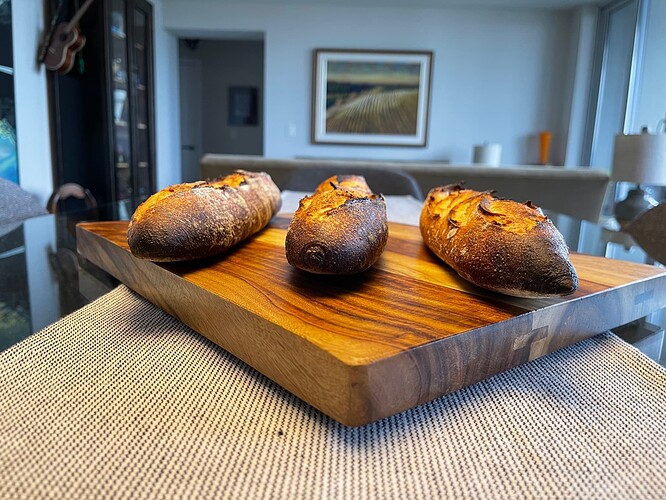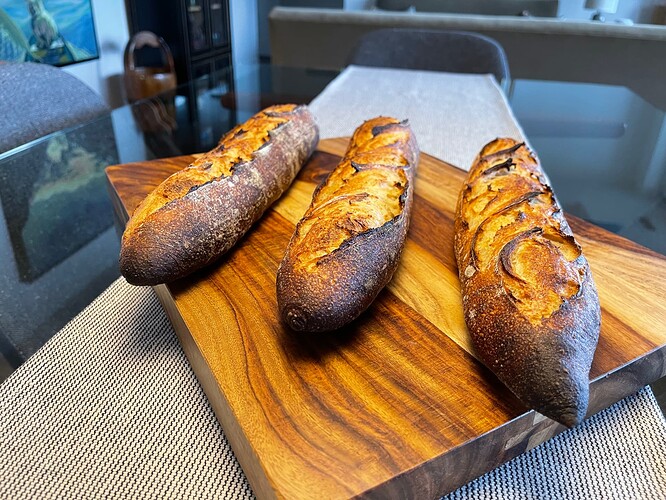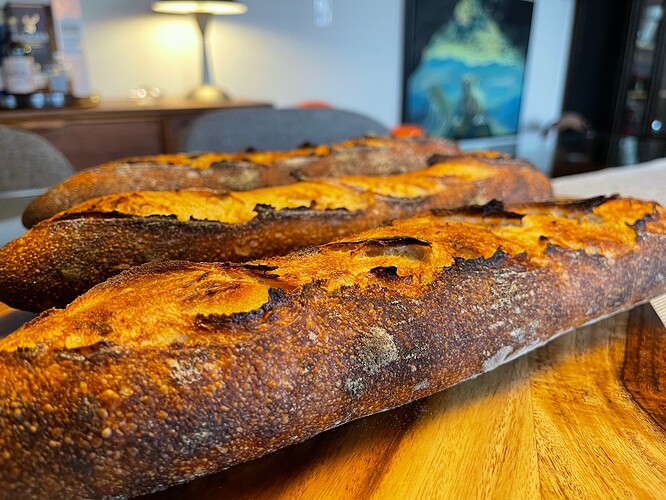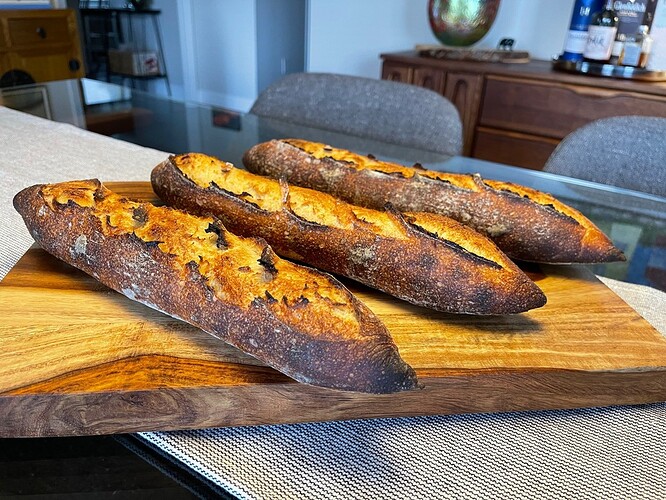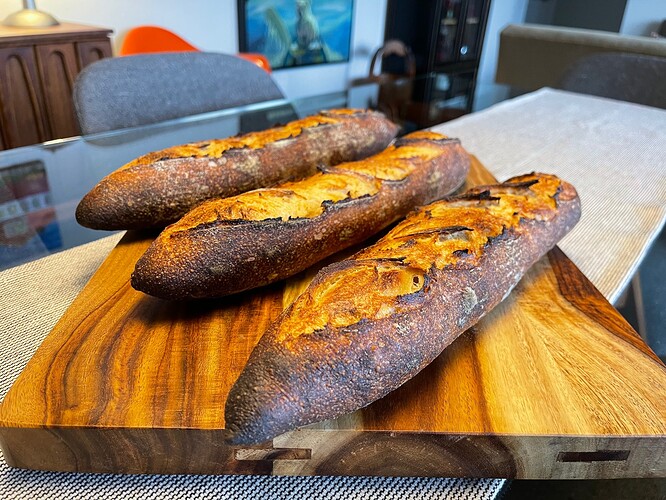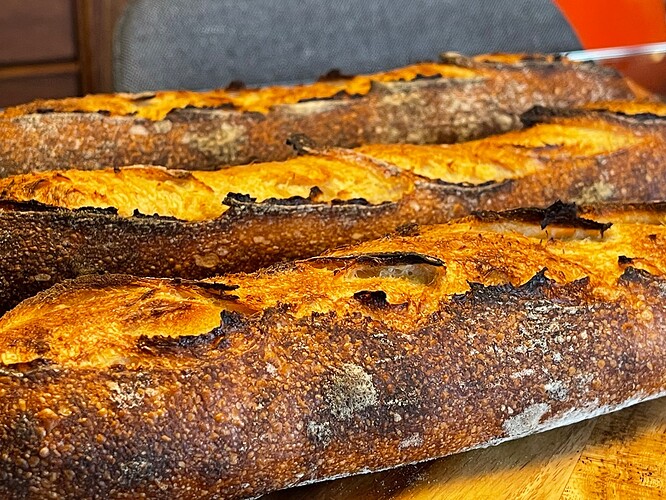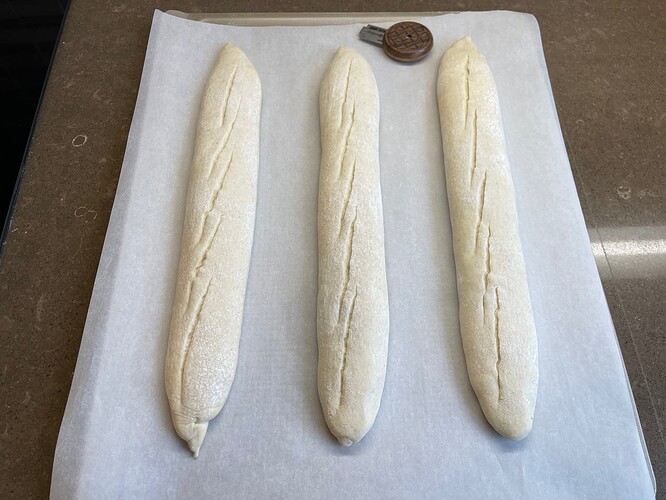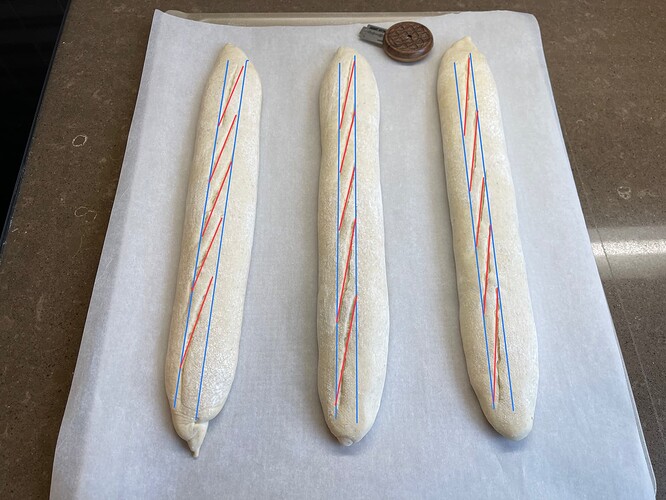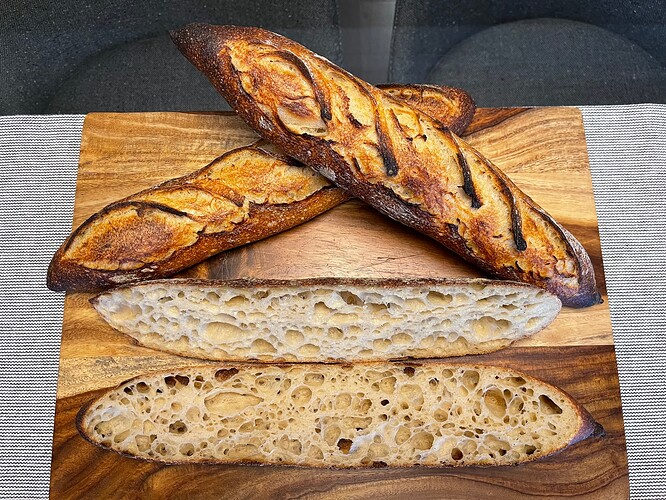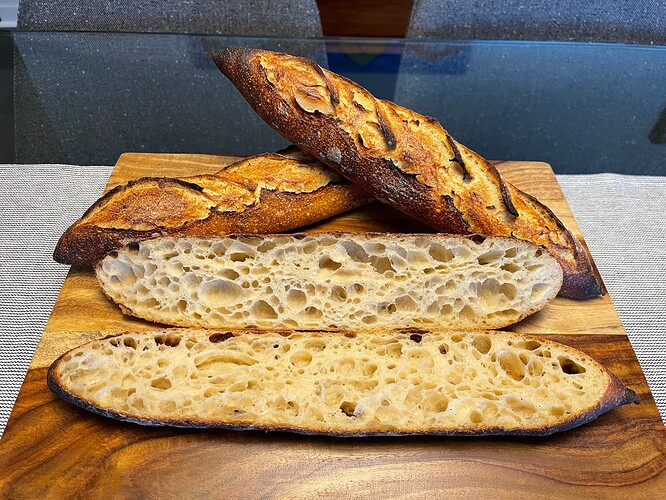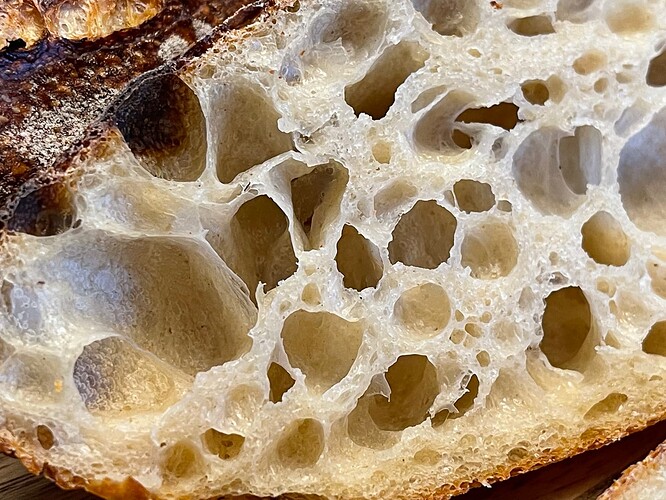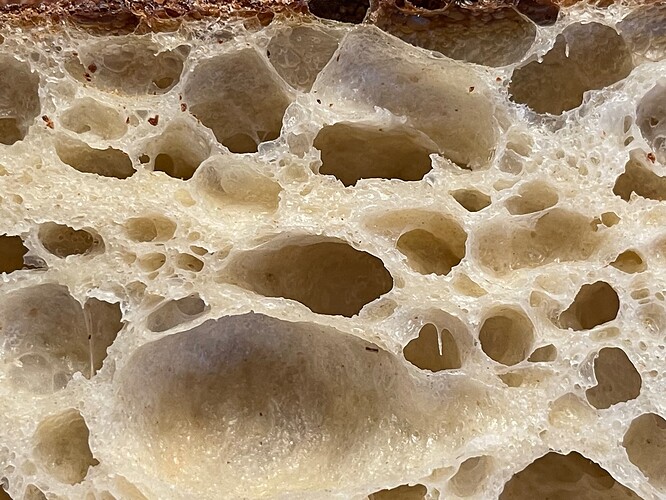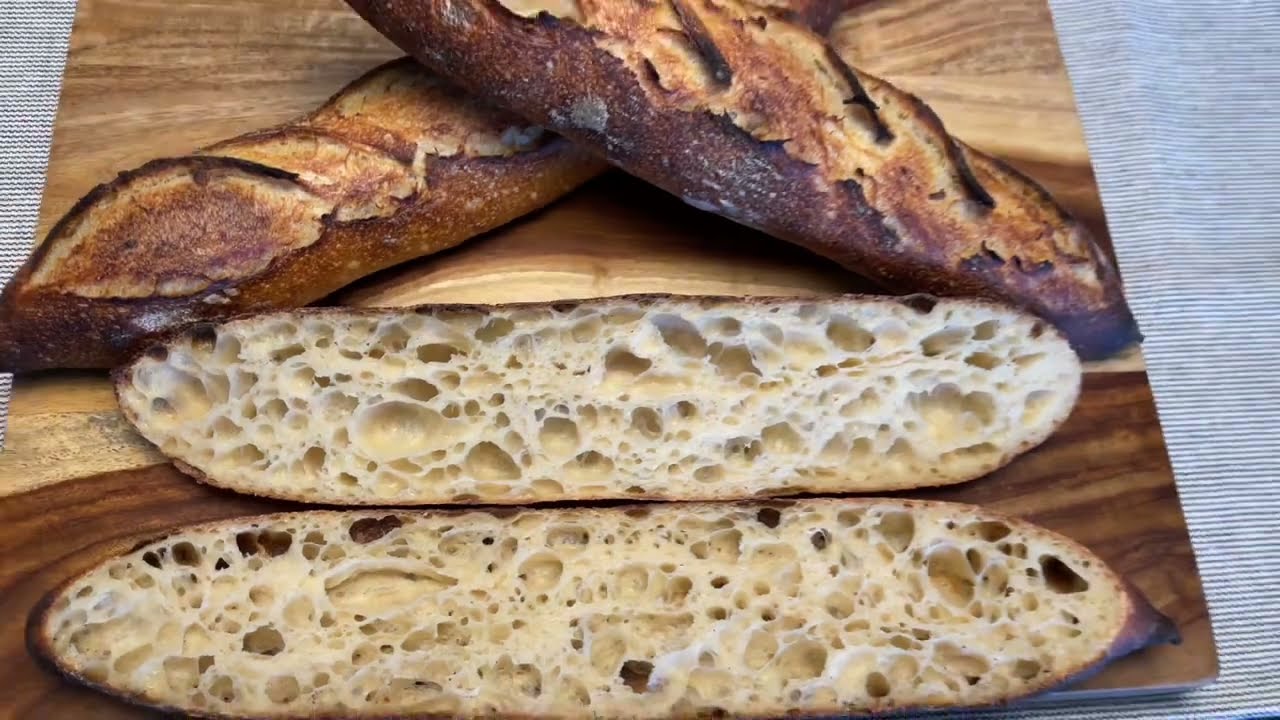I’m continuing to explore the uses for the stiff sweet levain and today’s bake is my first use of it in a baguette. So I made adjustments to the Yorkville Sourdough Baguette recipe (the original recipe is posted here Poppyseed Crusted Yorkville Sourdough Baguettes – Breadtopia )
to accommodate the stiff sweet levain and to increase the hydration somewhat. I have gradually been changing how I develop my dough for baguettes. I have found so far that I can more thoroughly develop the gluten early on allowing me to do a longer final proofing. By doing this I can open up the crumb whilst achieving the grigne and ears that one desires in a baguette. In order to combat the dough being less extensible from the greater dough development I have gradually increased the hydration.
A reminder if you aren’t familiar with the stiff sweet levain about the science behind how it allows you to bake a sourdough bread with less acidity. As you know it is the LAB that create most of the acid in our sourdough breads. The LAB are more affected by the dehydrating effects of low hydration and in particular the osmotic pressure exerted by sugar. So by using a levain with a sugar concentration of 50% in this case and a hydration of 60% one can create a sourdough bread with less LAB and thus less acid. For my all white levain, the starting pH was 4.93 and the pH at peak was only 4.37. That is a drop of only 0.56. In general, my levains at peak would have a far greater drop of between 1.0-1.3 in pH so that is quite remarkable that the levain pH dropped by so little.
In addition, the dough when mixed with this levain had a starting pH of 5.52, again this is an all purpose flour with essentially no bran to buffer the acid. At the time of baking just the pH was about 4.5. Again this is remarkable as typically for mostly white flour breads the pH at bake for me would be lower around 3.8 or so. That difference of 0.8 is substantial and the baguettes should still have some complexity of a sourdough but have less of the sour tang if you aren’t interested in that profile to the flavour of your bread.

Overnight levain
18 g starter + 16 g white sugar + 23 g water + AP flour 51 g. 78°F
Fermentolyse - mix 378 g water with all the levain, salt 11 g and diastatic malt 5.7 g to dissolve, then add 521 g AP flour to combine. Slap and fold x 100 then add hold back water 23 g gradually working in until fully absorbed then slap and fold x 100.
Bulk Fermentation 82*F until aliquot jar shows 20% rise.
Do folds every 30 mins doing 2-3 folds
Could do cold retard at this point for up to overnight. (Aliquot jar 20% rise)
Divide and pre-shape rest for 15 mins
Shape en couche with final proof until aliquot jar shows 30% rise then cold retard shaped baguettes en couche for at least 15 minutes for easier scoring.
Pre-heat oven 500F after 30 mins add Silvia towel
Transfer to peel on parchment
Score each baguette and transfer to oven bake on steel
Bake with steam pouring 1 cup of boiling water to cast iron skillet dropping temperature to 480F
The baguettes are baked with steam for 13 mins. The steam equipment is removed venting the oven of steam. Transfer the baguettes from the baking steel to next rack completing baking directly on a rack to minimize the browning of the bottom crust. The oven is left at 480ºF but convection is turned on and the baguettes bake for 10 mins rotating them halfway. The oven temperature is then dropped to 450ºF and the baguettes rotated again if needed and baked for another 3 mins to achieve a rich colour crust.

